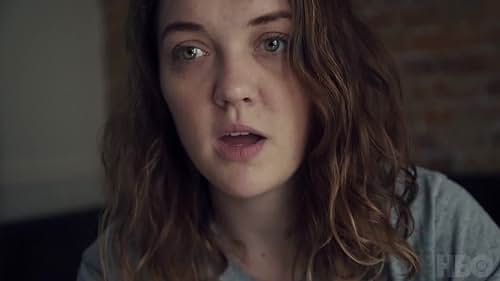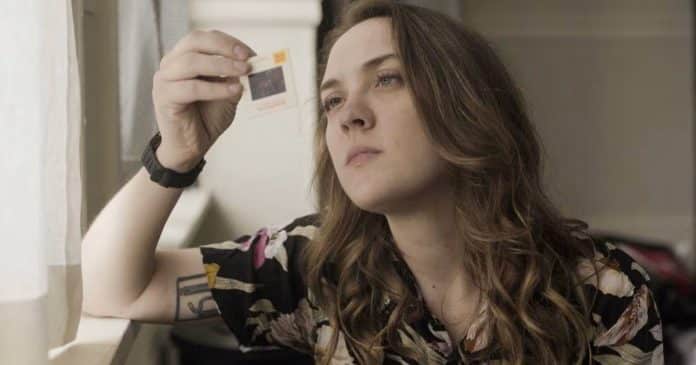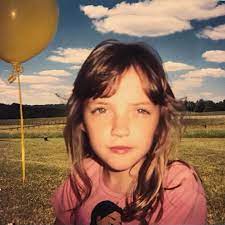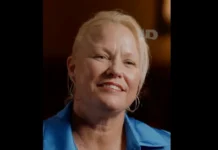Amanda Mustard Photographer – Embarking on an enthralling journey through the lens of HBO’s compelling documentary, “Great Photo, Lovely Life,” we delve into the life of the remarkable Amanda Mustard, a seasoned photojournalist whose story unfolds with intensity and courage. In this article, we navigate the twists and turns of Amanda’s life, exploring her profound experiences and the gripping narrative captured in the documentary. As we unravel the mysteries surrounding Amanda Mustard Photographer, we aim to shed light on her background, her journey into the world of photojournalism, and the captivating revelations brought forth in HBO’s exploration of her family’s truth.

Who is Amanda Mustard?
Amanda Mustard, a name resonating with passion and resilience, emerges from a childhood steeped in complexity on a Christmas tree farm in Harrisburg, Pennsylvania. Beneath the picturesque surface of her upbringing lies a family marred by dysfunction, where silence shrouded painful truths. Departing from the confines of an ostensibly idyllic Christian family at the tender age of 18, Amanda transitioned from pursuing a career as a marimbist to dedicating herself to visual storytelling as a photojournalist.
Mustard’s journey, as portrayed in “Great Photo, Lovely Life,” unveils the layers of her past, marked by her grandfather’s sinister actions as a pedophile. Through her lens, Amanda discovered a potent tool to expose the truth and break the cycle of silence that engulfed her family. The documentary becomes a canvas for her to confront the darkness, providing a lens into her evolution as a journalist and a courageous woman.
What Happened to Amanda Mustard Photographer?
In the gripping narrative of “Great Photo, Lovely Life,” the layers of Amanda Mustard’s life unfold with a profound impact. The documentary takes us on a visceral journey, not just through the lens of her camera, but into the depths of her family’s hidden turmoil. At the core of this exploration is the shocking revelation of Amanda’s grandfather, Bill Flickinger, emerging as a serial pedophile. This revelation, though unsettling, becomes a catalyst for Amanda’s transformative journey.
Amanda’s decision to confront her family’s haunting past wasn’t merely an act of journalistic pursuit; it was a courageous plunge into the abyss of her own history. The documentary skillfully captures her navigating the complexities of justice, familial bonds, and societal norms. The stark reality portrayed challenges the audience to question not only the individual responsible but also the systems that allowed such heinous acts to persist.
The juxtaposition of Amanda’s personal evolution with her professional commitment adds layers to the narrative. As a photojournalist, she transforms the camera into a tool of empowerment, exposing the truth that had remained veiled for far too long. The documentary becomes a canvas for Amanda to break the chains of silence, not only for herself but for others who have suffered in the shadows.
Beyond the shocking revelations, the documentary also delves into Amanda’s resilience and her relentless pursuit of justice. It illuminates the painful dynamics within her family, where complicity and denial masked the true extent of Flickinger’s actions. Amanda’s unwavering determination to speak truth to power serves as a beacon for others grappling with the weight of their own family secrets.
“Great Photo, Lovely Life” emerges not only as a documentary about Amanda Mustard Photographer but as a societal mirror reflecting the complexities of confronting trauma and seeking justice. It underscores the profound impact storytelling can have in unraveling hidden truths and fostering healing. Amanda’s journey becomes a testament to the strength that can be found in confronting the darkest corners of one’s past and emerging stronger on the other side.
As we navigate the intense revelations in the documentary, we witness Amanda’s transformation from a victim of familial silence to a powerful advocate for breaking the cycle of abuse. The story transcends the confines of a family saga, resonating with anyone who has grappled with the complexities of confronting uncomfortable truths. Through Amanda’s lens, the audience is invited to reflect on the broader implications of silence, complicity, and the cathartic power of exposing the truth.
Where is Amanda Mustard Photographer Now?
Beyond the compelling narrative of “Great Photo, Lovely Life,” Amanda Mustard’s story extends into the present, showcasing a woman whose resilience reverberates far beyond the frames of the documentary. As we explore where Amanda Mustard Photographer is now, we witness a multifaceted individual who has seamlessly woven her personal and professional experiences into a tapestry of advocacy and impactful storytelling.
In the aftermath of confronting the demons within her family, Amanda stands tall as a symbol of strength and transformation. As a seasoned photojournalist, she continues to wield her camera not only as a tool for storytelling but as a weapon against injustice. Amanda’s lens captures narratives that transcend borders and cultures, amplifying the voices of those often unheard. Her work, marked by ethical sensitivity and a satisfying aesthetic, serves as a testament to the power of visual storytelling in bringing about social change.
Amanda’s journey extends globally, with bases in Brooklyn (New York), and Bangkok, (Thailand). This geographical duality reflects her commitment to capturing diverse stories and shedding light on the nuances of the human experience. Whether immersing herself in the bustling streets of New York or the vibrant landscapes of Thailand, Amanda’s lens captures the essence of her subjects with a unique blend of curiosity and compassion.
Her role as a board member of the Frontline Freelance Register underscores Amanda’s dedication to the protection and sustainability of freelancers in the media industry. In an era where the challenges faced by journalists are ever-evolving, Amanda actively contributes to creating a safer and more supportive environment for those on the frontline of storytelling.
Amanda’s advocacy extends beyond professional realms, delving into gender equality in the media industry. As an advocate for justice and equality, she utilizes her platform to challenge existing norms and promote a more inclusive and supportive space for all voices. Her involvement with the Photography Ethics Centre further solidifies her commitment to ethical storytelling, emphasizing the importance of narratives that are not only impactful but also rooted in integrity.
In addition to her impactful role as a photojournalist, Amanda has embraced the realm of filmmaking. This expansion into the world of cinema allows her to explore storytelling through a different lens, adding yet another dimension to her already diverse repertoire. Through both photography and filmmaking, Amanda continues to captivate audiences, offering a nuanced perspective on the complexities of the human condition.
Amanda’s journey is not solely defined by professional accolades; it’s also marked by a genuine love for people and a penchant for experiences that surprise and delight. Her open-heartedness forges a special intimacy with her subjects, creating narratives that resonate on a deeply human level. In this way, Amanda transcends the conventional boundaries of a photojournalist; she becomes a storyteller who captures the soul of her subjects with empathy and authenticity.
As we seek to understand where Amanda Mustard Photographer is now, we find her not confined by a singular identity but flourishing as a dynamic force within the realms of journalism, filmmaking, and advocacy. Her unwavering commitment to ethical storytelling and her role in shaping a more inclusive media landscape make Amanda Mustard a luminary whose impact extends far beyond the frames of any single photograph or documentary.
Must Read: Chyenne Kircher Murder: Where is Killer Step-father Terry Abbas Now?
















